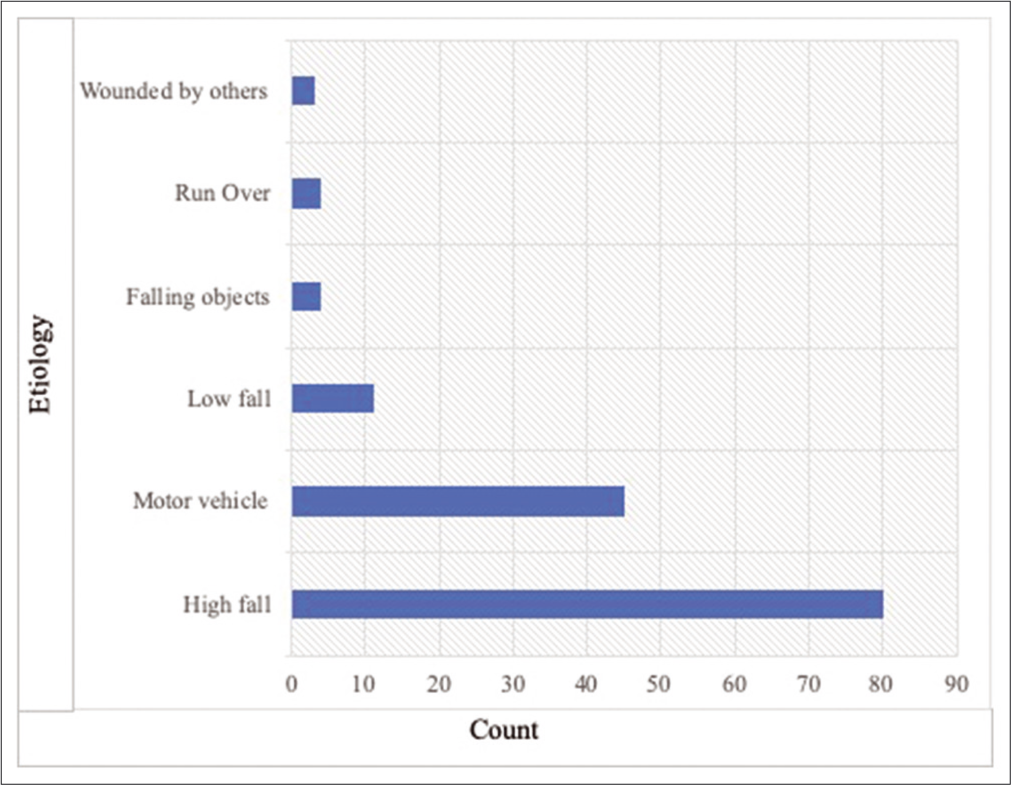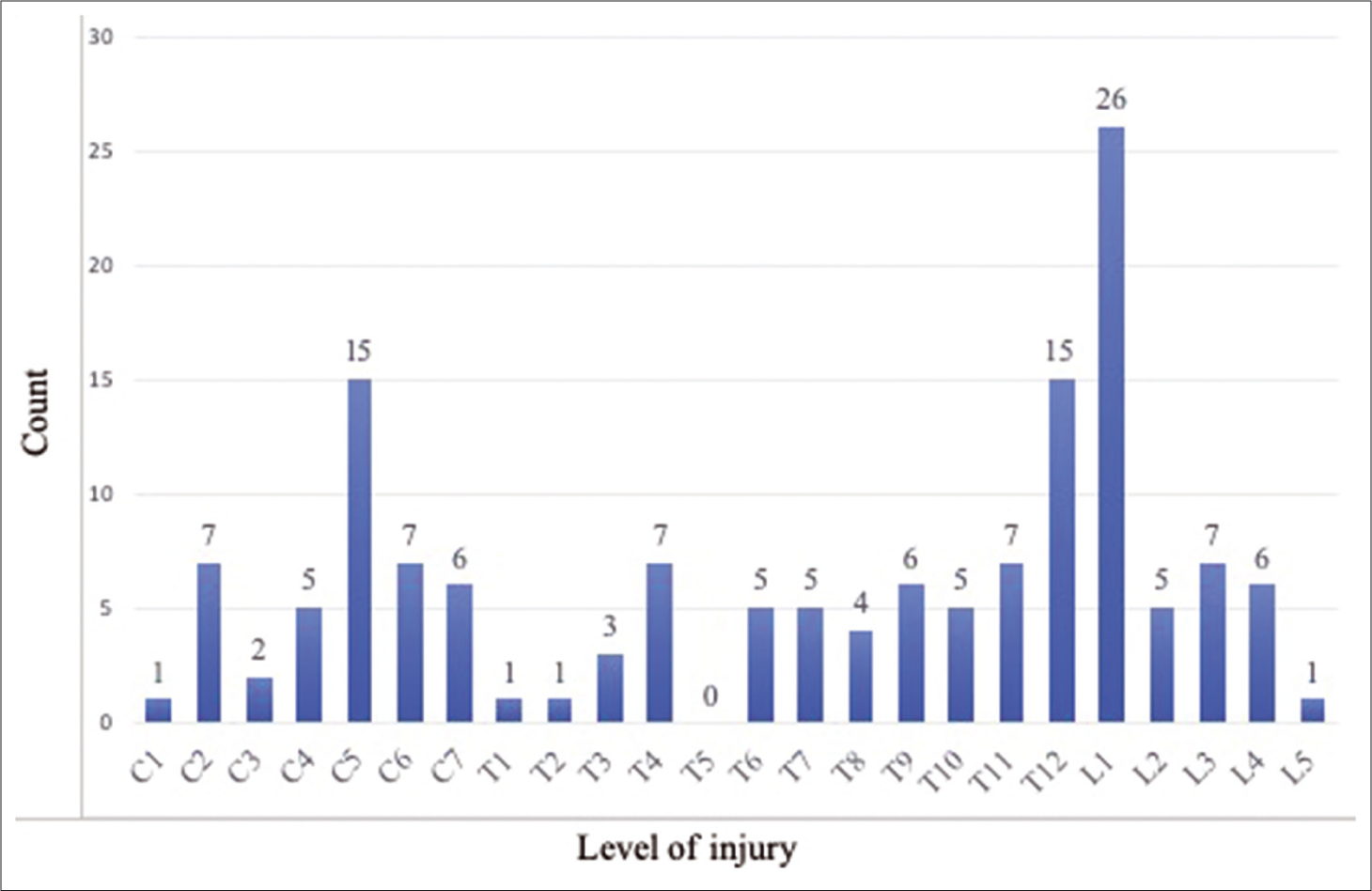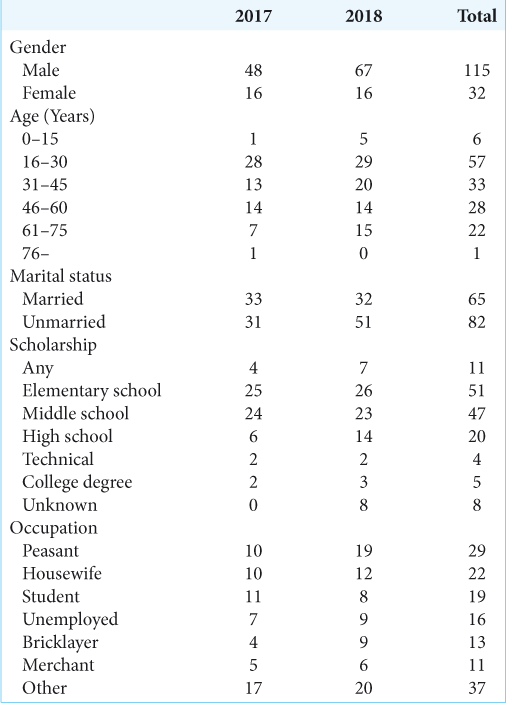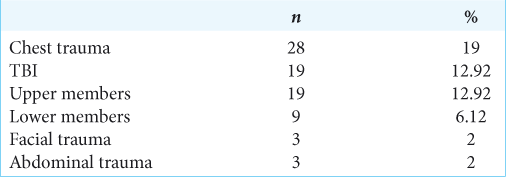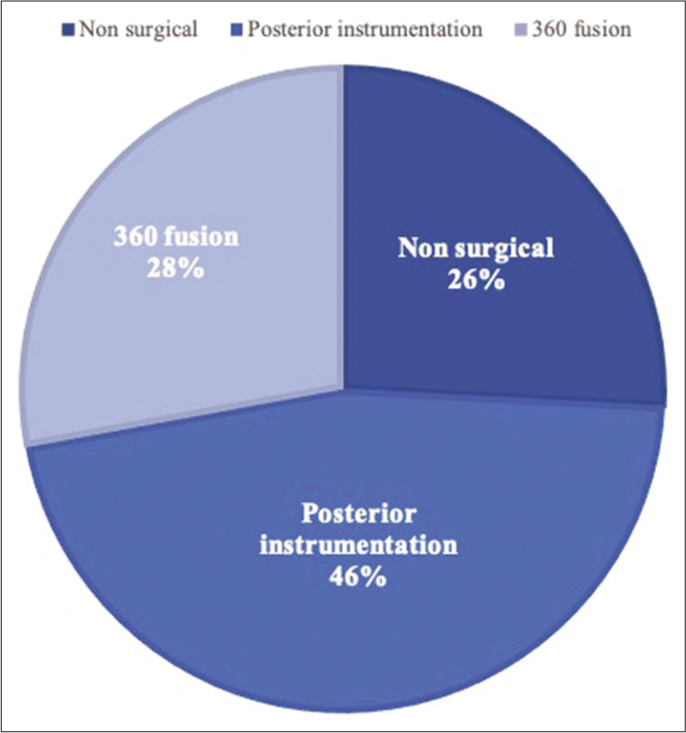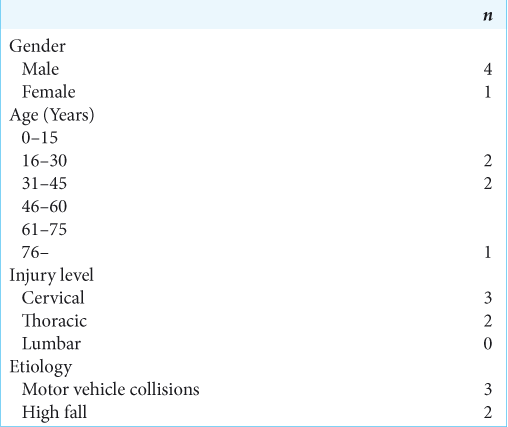- Departments of Neurosurgery, Centro Médico “Lic. Adolfo López Mateos,” Instituto de Salud del Estado de México, Av. Nicolás San Juan s/n Ex Hacienda La Magdalena, Toluca, Estado de México, México.
- Departments of Internal Medicine, Centro Médico “Lic. Adolfo López Mateos,” Instituto de Salud del Estado de México, Av. Nicolás San Juan s/n Ex Hacienda La Magdalena, Toluca, Estado de México, México.
Correspondence Address:
César Adán Almendárez-Sánchez
Departments of Neurosurgery, Centro Médico “Lic. Adolfo López Mateos,” Instituto de Salud del Estado de México, Av. Nicolás San Juan s/n Ex Hacienda La Magdalena, Toluca, Estado de México, México.
DOI:10.25259/SNI_284_2019
Copyright: © 2020 Surgical Neurology International This is an open-access article distributed under the terms of the Creative Commons Attribution-Non Commercial-Share Alike 4.0 License, which allows others to remix, tweak, and build upon the work non-commercially, as long as the author is credited and the new creations are licensed under the identical terms.How to cite this article: César Adán Almendárez-Sánchez, Thalía Sotelo-Popoca, Abrahan Alfonso Tafur-Grandett, Raúl Huato-Reyes. Technical note: In Mexico, the majority of 147 traumatic spinal cord injuries occurred in the thoracic spine for young males. 20-Jun-2020;11:162
How to cite this URL: César Adán Almendárez-Sánchez, Thalía Sotelo-Popoca, Abrahan Alfonso Tafur-Grandett, Raúl Huato-Reyes. Technical note: In Mexico, the majority of 147 traumatic spinal cord injuries occurred in the thoracic spine for young males. 20-Jun-2020;11:162. Available from: https://surgicalneurologyint.com/surgicalint-articles/10097/
Abstract
Background: Traumatic spinal cord injury (TSCI) is a devastating problem typically associated with multi-organ disorders. Studies regarding TSCI and their attendant comorbidities are scarce from developing countries.
Methods: The electronic files of 147 patients with TSCI (2017–2018) were reviewed; 78% of patients were males averaging 38 years of age. The following variables associated with the TSCI included age, sex, etiology of trauma, vertebral level, fracture classification, Frankel grade, treatment, complications, and mortality.
Results: Of interest, most cases involved thoracic injuries with attendant chest trauma resulting from falls from substantial heights.
Conclusion: In Mexico, the majority of TSCI occur in young males (average age 38) who have sustained falls from significant heights resulting in thoracic fractures with a high frequency of chest injuries. By providing such information for developing countries, we may develop future strategies to TSCI in vulnerable populations.
Keywords: Epidemiology, Incidence, México, Spinal cord injury, Traumatic
INTRODUCTION
Traumatic spinal cord injuries (TSCIs) are catastrophic. They typically occur in young adult males, their reported incidence varies depending on the country studied; 20.7–83.0/per million residents/year in America, 8.0–130.6 in Europe, 10.0–77.0 in Oceania, and from 14.6 to 246 in Asia.[
MATERIALS AND METHODS
We reviewed the electronic files of 147 patients treated from 2017 through 2018, who sustained TSCI. A detailed analysis of the multiple epidemiological and clinical variables was performed that included age, sex, affected vertebral level, associated injuries, Frankel Grade, and treatment. The statistical analysis was performed by two independent researchers. All information was collected in a Microsoft Excel spreadsheet (Office 2016, Microsoft) and then analyzed with IBM SPSS (Version 21, IBM).
Clinical data
Of the 147 cases, 78% (115) were male, and 22% (32) were female, averaging 38.61 and 37.03 years of age, respectively [
RESULTS
Frankel and AO spine classification
Most patients were classified as Frankel, Type E (TSCI: 42.17% [62]), followed by Type A 28.57% (42), Types C, D, and B [
In-hospital complications
Notably, 19% (28 patients) of patients sustained in-hospital complications: pulmonary (14%), urinary tract infections (2%), decubitus ulcer (2%), and deep venous thrombosis (two cases) [
Nonsurgical versus surgical management
Of the 147 cases, 74.2% (109) required surgery consisting of posterior instrumentation (46.25%) and 360 fusions (27.89%). The remaining 25.8% were managed non surgically [
DISCUSSION
This is a retrospective descriptive study aimed at defining preventive strategies for spinal trauma. Is it generally knows that TSCI exerts a substantial financial burden on patients and society.[
CONCLUSION
TSCI affects mostly young males who have fallen from a substantial height. The majority of lesions are thoracic and are accompanied by a hemothorax, with nearly 75% warranting surgery. Knowledge of the cause of TSCI in Mexico and the associated factors should allow us to design a preventive program and better prepare our medical and surgical resources to treat these patients.
Declaration of patient consent
Patient’s consent not required as patients identity is not disclosed or compromised.
Financial support and sponsorship
Nil.
Conflicts of interest
There are no conflicts of interest.
References
1. Chen YY, Tang Y, Vogel LC, DeVivo MJ. Causes of spinal cord injury. Top Spinal Cord Inj Rehabil. 2013. 19: 1-8
2. Chiu WT, Lin HC, Lam C, Chu SF, Chiang YH, Tsai SH. Review paper: Epidemiology of traumatic spinal cord injury: Comparisons between developed and developing countries. Asia Pac J Public Health. 2010. 22: 9-18
3. Furlan JC, Sakakibara BM, Miller WC, Krassioukov AV. Global incidence and prevalence of traumatic spinal cord injury. Can J Neurol Sci. 2013. 40: 456-64
4. Koskinen EA, Alen M, Vaarala EM, Rellman J, Kallinen M, Vainionpaa A. Centralized spinal cord injury care in Finland: Unveiling the hidden incidence of traumatic injuries. Spinal Cord. 2014. 52: 779-84
5. Lee BB, Cripps RA, Fitzharris M, Wing P. The global map for traumatic spinal cord injury epidemiology: Update 2011, global incidence rate. Spinal Cord. 2014. 52: 110-6
6. Nijendijk JH, Post MW, van Asbeck FW. Epidemiology of traumatic spinal cord injuries in The Netherlands in 2010. Spinal Cord. 2014. 52: 258-63
7. Ning GZ, Yu TQ, Feng SQ, Zhou XH, Ban DX, Liu Y. Epidemiology of traumatic spinal cord injury in Tianjin, China. Spinal Cord. 2011. 49: 386-90
8. Pickett GE, Campos-Benitez M, Keller JL, Duggal N. Epidemiology of traumatic spinal cord injury in Canada. Spine. 2006. 31: 799-805
9. Van den Berg ME, Castellote JM, Mahillo-Fernandez I, de Pedro-Cuesta J. Review: Incidence of spinal cord injury worldwide: A systematic review. Neuroepidemiology. 2010. 34: 184-92



